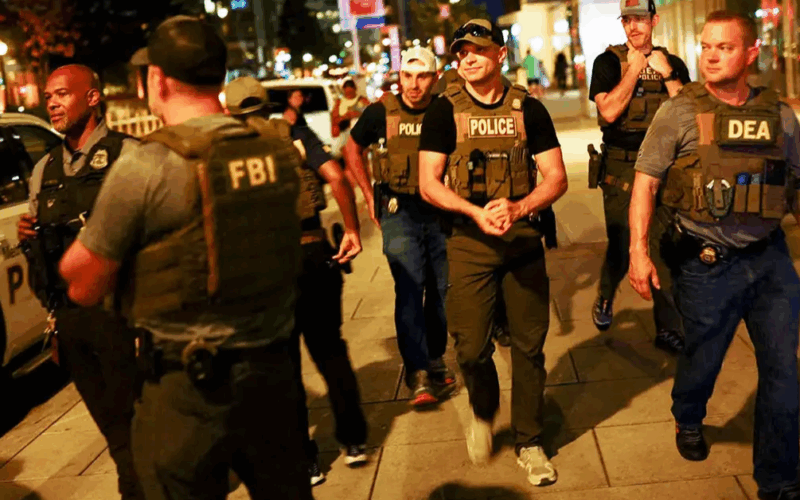Washington, D.C. – A recent poll reveals that an overwhelming 81% of American adults perceive crime in large cities as a major problem. This public concern aligns with President Donald Trump’s stance on urban crime, prompting decisive federal actions including the deployment of National Guard troops to cities such as Los Angeles and Washington, D.C.
Trump has also indicated plans to potentially expand these crime crackdowns to other metropolitan areas like New York and Chicago, stirring debates on the balance between public safety and federal authority.
Public Opinion and Crime Concerns in Urban Areas
The new poll underscores the widespread public anxiety about escalating criminal activity in major US cities. Key findings include:
- 81% of US adults identify urban crime as a major problem.
- Heightened concerns coincide with recent National Guard deployments and federal crackdowns.
- Public perception appears at odds with official crime statistics in some cities.
Federal Actions and Political Responses
President Trump has taken a strong federal stance by mobilizing National Guard troops to support local law enforcement in cities with rising crime reports. These measures have elicited sharp reactions from prominent Democratic leaders:
- Governor JB Pritzker of Illinois and Governor Gavin Newsom of California have condemned the President’s tactics as authoritarian and an overreach of federal authority.
- Governor Pritzker specifically requested that Trump refrain from visiting Chicago, emphasizing the city’s significant progress in reducing murders and shootings.
Governor Pritzker stated, “Chicago has seen considerable success in bringing down violent crime rates, and federal interference undermines local efforts.”
Crime Statistics Paint a Complex Picture
Despite Trump’s focus on urban crime spikes, federal data suggests a more nuanced reality. According to the FBI, overall violent crime across the United States decreased by 4.5% last year. Particularly noteworthy is Washington, D.C., which recorded a 30-year low in violent crime rates during the same period.
These statistics highlight the complexity of crime trends and suggest that public perception may not always align with official data sources.
The Path Forward: Balancing Safety and Authority
The ongoing debate centers around the balance between ensuring public safety and respecting local governance. Experts emphasize the need for coordinated efforts rather than confrontations between federal and state leaders to effectively address urban crime challenges.
- Federal support can augment local law enforcement efforts, but must respect municipal jurisdiction.
- Community-based initiatives remain critical for sustainable crime reduction.
- Clear communication and cooperation among political leaders are essential to restore public confidence.




